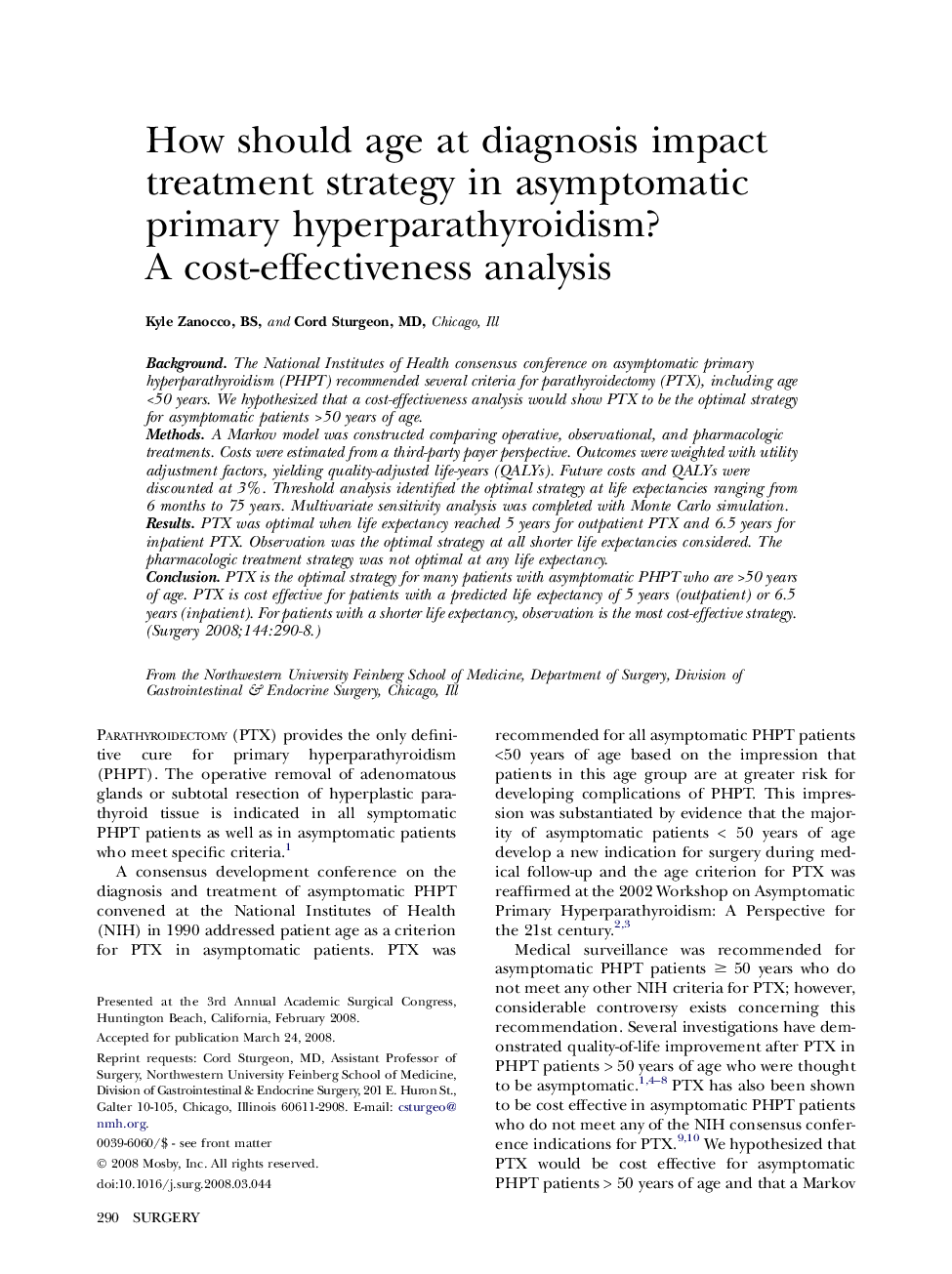| Article ID | Journal | Published Year | Pages | File Type |
|---|---|---|---|---|
| 4309466 | Surgery | 2008 | 9 Pages |
BackgroundThe National Institutes of Health consensus conference on asymptomatic primary hyperparathyroidism (PHPT) recommended several criteria for parathyroidectomy (PTX), including age <50 years. We hypothesized that a cost-effectiveness analysis would show PTX to be the optimal strategy for asymptomatic patients >50 years of age.MethodsA Markov model was constructed comparing operative, observational, and pharmacologic treatments. Costs were estimated from a third-party payer perspective. Outcomes were weighted with utility adjustment factors, yielding quality-adjusted life-years (QALYs). Future costs and QALYs were discounted at 3%. Threshold analysis identified the optimal strategy at life expectancies ranging from 6 months to 75 years. Multivariate sensitivity analysis was completed with Monte Carlo simulation.ResultsPTX was optimal when life expectancy reached 5 years for outpatient PTX and 6.5 years for inpatient PTX. Observation was the optimal strategy at all shorter life expectancies considered. The pharmacologic treatment strategy was not optimal at any life expectancy.ConclusionPTX is the optimal strategy for many patients with asymptomatic PHPT who are >50 years of age. PTX is cost effective for patients with a predicted life expectancy of 5 years (outpatient) or 6.5 years (inpatient). For patients with a shorter life expectancy, observation is the most cost-effective strategy.
